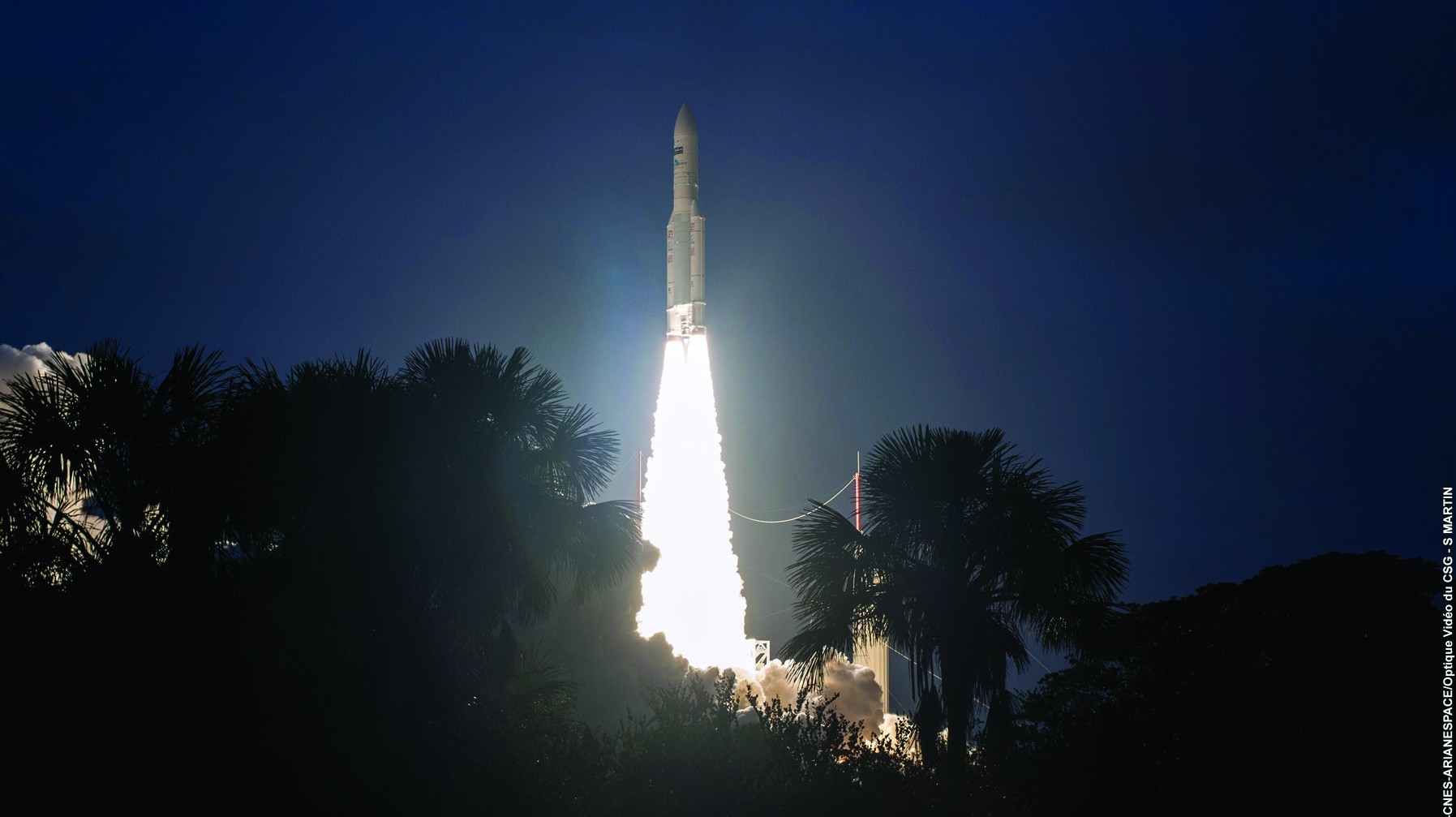
Europe's veteran Ariane 5 rocket will generate some swan-song fireworks on the United States' Independence Day, if all goes according to plan.
The Ariane 5 heavy lifter was originally scheduled to fly for the last time on June 16. But that planned launch was called off on June 15, after mission team members discovered a potential problem with three pyrotechnical transmission lines that are associated with the Ariane 5's solid rocket boosters.
That issue has been resolved, according to Arianespace, the France-based company that operates the Ariane 5 for the European Space Agency. The rocket is now set to fly from Europe's Spaceport in Kourou, French Guiana on July 4, during a 95-minute window that opens at 5:30 p.m. EDT (2130 GMT; 6:30 p.m. local time in Kourou).
You can watch the liftoff here at Space.com when the time comes, courtesy of Arianespace.
Related: Ariane 5 rocket launches biggest Eutelsat satellite ever
The final Ariane 5 mission will deliver two satellites to geostationary transfer orbit (GTO), a waypoint on the road to geostationary orbit, which lies about 22,200 miles (35,800 kilometers) above Earth. (GTO is an elliptical path whose maximum altitude is close to that of geostationary orbit; satellites in GTO then move into the circular geostationary orbit by conducting engine burns.)
One of the spacecraft, the Heinrich-Hertz-Satellit, will research and test new communications technologies and scenarios for the German space agency DLR, Arianespace wrote in a mission description.
The other payload, Syracuse 4B, is a communications satellite that will be operated by the French military. Syracuse 4B "will enable the French Armed Forces to remain permanently connected during deployments," Arianespace wrote.
"Syracuse 4B will be totally protected against the most extreme jamming methods," the company added. "Built to defend French sovereignty, the satellite will also be able to support operations led by NATO and the EU."
The Ariane 5, which can carry more than 22 tons (20 metric tons) of payload to low Earth orbit, has been a fixture on the launch scene for decades: The rocket debuted in 1996 and now has 116 liftoffs under its belt.
Some of those flights carried very high-profile payloads skyward. For example, the Ariane 5 lofted ESA's Rosetta comet-chasing mission in March 2004 and NASA's James Webb Space Telescope in December 2021.
Arianespace's new heavy lifter, the Ariane 6, will take over from the Ariane 5. The Ariane 6 has been in development for a decade and isn't expected to debut until late this year at the earliest.






